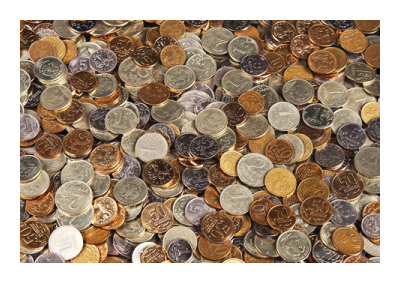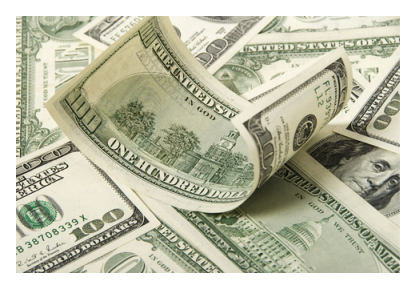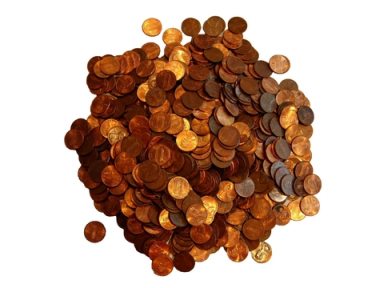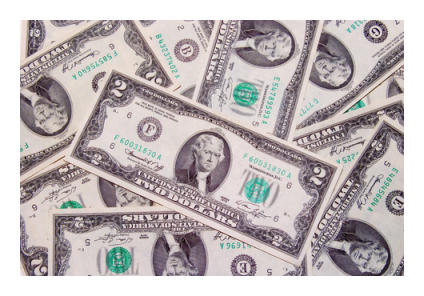Money Myths, Madness, and Mayhem – The 85th Edition of the Carnival of Money Stories
Welcome to the Carnival of Money Stories! I am thrilled to be able to host this edition of the carnival. I hope you enjoy all of the submissions as much as I did.
This issue of the carnival contains some wacky and wild money stories brought to you Myth Busters style. Some are true, some are false, all are a little crazy! If you’re new here, please subscribe to my RSS Feed and then sit back, and enjoy the stories!

Wealth in Your Pocket?
Myth: In April of 2006 a wealthy businessman named Scott Travers decided to honor national coin week by placing three rare coins into circulation. The coins have never been “found”.
Status: 
Scott Travers did unleash three rare coins into circulation – and it wasn’t the first time he’s done it either. It turns out that Scott, who is the author of The Coin Collector’s Survival Manual and the ex-vice president of the American Numismatic (The study and collection of coins) Association was hoping that if he put the rare coins into circulation and then publicized it, it would spark a renewed interest in coin collecting among the American public.
The three coins he released were all pennies:
1909-S.V.D.B. Lincoln Cent – worth approximately $1,600
1914-D Lincoln Cent – worth approximately $479
1908-S Indian Head Cent – worth approximately $200
No one has ever claimed to have found these coins, or several of the other coins Scott released either. Check your pockets!
- The Smart Spending Blog has an article about helping out your friends in “What if a friend were losing her home?” This is a really excellent article, and a very humbling one. *Editor’s Pick
- Taking Charge featured “Criminal Charges: Volume XV — Recession-proof crimes” It’s nice to know that crooks do get busted, and it was interesting to see the impact of the economy on crime.
- Happiness Is Better wants to know, “What’s the Best Financial Decision You’ve Made?“. This is a piece they drew from their readers, and there are some great observations in it.
- I Pick Up Pennies has a wonderful article called “Who’d have thought being poor was the way to go?” Check it out for a positive take on today’s economy.
- Money Ning wrote an excellent article on “Reduce, Reuse, Recycle and How it Helped with My Personal Finance“. It’s funny how being green and managing your money really do go together!
- Fire Finance clued me in on “Torn Dollar Bills Reimbursement“. I’ve always done my best to tape money back together if it was damaged. It’s nice to know that you can get it replaced.
- Funny About Money has an article called “Pennies saved…“. Sometimes cutting small corners really adds up!
- For the gaming fans out there, check out this article by The Digerati Life, “Gaming For Less: Play The Best Video Games On A Budget“.
- Value for Your Life has 8 Reasons Why I Will Always Cook at Home. I loved this article. Lots of wisdom here.
- Five Cent Nickel dishes on their Open Enrollment and our Flexible Spending Account experience.

Drugs in our Money?
Myth: The majority of the paper money in the United States is contaminated with cocaine.
Status: 
The majority of the bills in the united states are contaminated with cocaine – In very, very microscopic amounts. In a 1997 study scientists found that as many as 4 out of every 5 bills contained minute traces of cocaine.
How does this happen? Since cocaine is a fine powder, it is easily spread in small quantities. Tiny amounts of cocaine dust transfer from a contaminated bill to every other bill it comes in contact with. Since most money is in constant circulation, it is regularly coming into contact with other bills which have been exposed, and so on – via ATM’s, cash drawers, etc.
The results of the study did say that the amount of cocaine actually on our cash is so minuscule that it will never show up in our bodies – Especially since most of us are handling cash less and less, and using debit and credit cards more often. So unless you’re at home rolling around in your cash like Scrooge McDuck, you probably don’t have anything to worry about. One more reason to wash your hands though!
Want to know more? Check it out on Snopes.
- Uncommon Cents ask their readers: Where Does Your Wallet Leak? A few of these responses sounded familiar!
- The Smarter Wallet shows us how to Finish Your Holiday Shopping Early And Save Money! I love shopping early because I can maximize sales instead of getting suck ing “something” at the last minute just to have a gift for someone.
- Stop Buying Crap is having a bad experience, with “Sigh. A Family Member Stole My Identity“. I’ve had that happen too, and it’s never good.
- Investing School has a short article defining the Earnings Per Share (EPS) of a stock. Excellent place to visit if you want to brush up on the fundamentals of investing.
- Budgets are Sexy wondered “How much does your Gallbladder cost?” Ouch! I hope your miss is better very, very soon.
- The Financial Wellness Project has an article titled “it’s all in the family” where they review their family’s different personality types as they relate to their money. I fall somewhere between the accountant and the entrepreneur.
- Subprime Blogger has a feel good piece titled “America, We CAN Get Out of Debt!” I sure hope so…
- The Sun’s Financial Diary lets us in on their Recent Bank Findings: OnBank, ShoreBank Direct and Venture Bank
- Free Money Finance is in love with Logan’s Roadhouse. Yay FMF! Sometimes all we hear are complaints about companies. It is so nice to hear some positive feedback too.
- No Debt Anymore has some Tips on How to Save Money. There were some good ideas in this article. I liked that they advised us to spend money only on our basic needs, and make list of our “wants”.

Your Money’s No Good Here?
Myth: There is a law that says merchants don’t have to accept more than 100 pennies from you when you pay for an item.
Status: 
Pennies are considered legal tender in any amount. So if you want to haul your change jar in to pay for your groceries it may be inconvenient (and the cashier certainly will not thank you for it!) but it is legal.
With the advent of services like CoinStar, and the ability to change money at our banks, it is thankfully less common to see people paying for things with large amounts of loose change. It might be something to keep in mind though, the next time a merchant upsets you! You can always crack open that piggy bank and tie up about an hour of their time. 🙂
- Million Dollar Investing Tip$ has a series going on. The first part of the series is “Top personal financial planning mistakes 1 – No goal“. I loved this quote from the article. “Most people don’t plan to fail, they just fail to plan.“
- The Real Estate Investing Journey talks about making A Move From ‘Creative’ Investing to More Traditional Methods.
- The Personal Financier talks about Surprising (and Promising) Aspects of the Financial Crisis. I really enjoyed this article!
- Everyday Finance had a really informative article on Selling High Priced Options in a Volatile Market. This was an awesome walkthrough!
- Lazy Man and Money shows us How $100 Could Save Your Child’s Life. This is an article about a really worthwhile charity – check it out!
- My Family’s Money is having a 1000 Miles Bike Commuting Celebration. Wow! What an achievement!
- Harvesting Dollars reminds us that “It’s Annual Benefits Enrollment Time“
- Living Almost Large is Finding Money, and wondering what to do. That’s always the question!

Penny Wise and Pound Foolish?
Myth: It costs more to mint a penny than its worth.
Status: 
Most years it does cost more to mint a penny than it’s worth. This is due to the rising cost of the base metals that penny is made from. Pennies are made from 97.5% zinc and 2.5% copper.
In 2007 the the approximate cost to mint a penny was 1.7 ¢ Our government justifies the difference in manufacturing costs and value because pennies are used for years before they drop out of circulation – so they feel they are “getting their money’s worth.”
- The Shark Investor always has good articles. This time he tells us “How YOUR Saving Advice Caused The Financial Crisis.” Interesting take.
- Credit Withdrawal features “It’s Hip to Be Spare” – How Frugality Has Become the New Fashion“. Yes, thriftiness does seem to be the new “black” this year, I’ll agree with that!
- The Financial Blogger tells us why they Think Canadian Banks Are Good Investments.
- The Higher Education Weblog is in Credit Card Hell. Learning to Manage credit can be an expensive, and very hard lesson.
- The Happy Rock talks about Getting A Credit Card Late Fee Removed. Always, always ask for this! Credit card companies do it every day.
- Personal Finance Analyst is gearing up for Christmas and telling us about Wreath Making Made Cheap with A.C. Moore Coupons.
- Penny Jobs has Some Advice for President Elect Obama. What an article! Several well made points.
- Entrepreneur Freedom did an article on “The Best Home Based Business – The Keys To Finding It!” That is was a very helpful article, I recommend it to anyone looking to earn some money at home.
- Rich Credit Debt Loan listed an article on The Difference Between Good Debt and Bad Debt. This is shaky ground as far as I am concerned, but the article is well written and makes a couple of nice points about leverage and the potential benefits of good debt.

Bad Mojo?
Myth: Two Dollar Bills Are Unlucky
Status:
While it’s impossible to say whether or not two dollar bills really are unlucky, they have certainly been considered “bad money” throughout history – and for a variety of reasons.
The United States first began printing $2 bills in 1862, and they are still being printed today. Yet hardly anyone uses them, and there are even people who believe that they aren’t “real” money. So what happened? How did $2 bills become the red-headed step children of the economy? Well, it’s a lot of myth and legend really.
In the 1930’s a single session with a prostitute cost $2. So anyone who had, or carried $2 bills was thought to either be a prostitute, about about to consort with one.
The standard amount of bets placed on horses used to be $2, so anyone with a wad of $2 bills, was certainly “up to no good”. You know, between the gambling and the prostitution.
And the third mythological reason why two dollar bills are unlucky is because they are often called “Duces” which is a slang term for the devil.
Even though none of these reasons really have anything to do with fact, and much more with assumptions, it’s easy to see why people would shy away from carrying them in large quantities. Those are the historical “reasons”, and even though they don’t give way to logic, it was enough to doom the $2 bill into relative obscurity.
- Find Bizcards has some good advice on starting a small business. This is a good one for everyone to read really, because most of us have something going on the side to earn money.
- Dividends4Life wrote an article called “It Has Been a Wonderful Year!” It was awesome to get to see how he is building his wealth and his blog.
- Single Guy Money has some Warning Signs of Financial Trouble.
- Fear And Loathing – The Gonzo Papers talks about A Long Weekend That Turned Into A Week, Thanks To The McCain/Palin Ticket. What an interesting adventure.
- Stock Investing Tips tells us their woes with “It’s Been A Brutal Year“. Lets hope next year sees more of a return to the black.
- No More Debt features some helpful tips on Not Abusing Your Credit Card – This is a short and sweet article that covers all the bases.
- The Tallahassee Real Estate Blog helps us Discover The Secret To Making A “Perfect” Home Buying Offer. It’s nice to know what you should be doing when you offer on a home.
That’s it for the 85th Carnival of Money Stories. Thank you so much for all of your submissions. I enjoyed reading each of the articles, and visiting your blogs. Come back and see us soon!
Best,
Mr. CC
